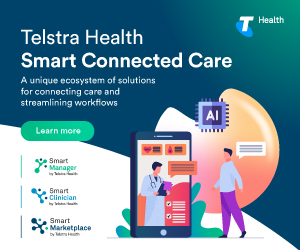When is the right time for you to move your practice to cloud?
Written by Chief Technology Officer, Dominique Powis. Originally appeared on LinkedIn, reposted here with permission.
Back in May, I gave a talk around cybersecurity and protecting patient and clinic information online, and I was again reminded that there is still some hesitancy and nervousness around clinics moving to cloud. One of the main questions I received was “When should I move my clinic’s software to the cloud” and my response is always “when you are ready”. I wanted to take some time to help outline some indicators that might help clinics understand when that time might be.
When is the right time to move to the cloud?
We use cloud technology in almost every aspect of our lives from our banking, shopping, education and more, yet when it comes to our practice software, many practices are still hesitant to move their data off their in-house servers and onto a cloud platform.
There are those out there whom I’ve spoken with who still believe that cloud software is not as secure as a traditional server-based platform, but I can see that this view is starting to change. It’s true that, compared to other countries, Australia has lagged when it comes to cybersecurity compliance and regulation, but based on the trends I see our industry moving towards, there will be more focus on cybersecurity laws and the need for compliance in the near future – we all need to be ready.
Given the way technology is evolving, at some point the healthcare industry will need to move to a cloud-based platform, and there are certainly a number of benefits to doing so. Before we move to the ‘when’, let’s revisit the ‘why’.
Why are practices moving to the cloud?
Here are the main benefits I see for healthcare practices in making the move from on premise to a cloud-based software platform.
● Security: As long as your cloud provider follows security best practices, cloud is incredibly secure, and you get the added benefit that security updates are all taken care of for you. A cloud provider like Microsoft Azure, which we base our MedicalDirector Helix platform on, is backed by billion dollar infrastructure and leading-edge security and monitoring alerts so you can have peace of mind that your patient data is protected at all times.
● No upgrades: Upgrading your on-premise software can be time consuming and adds to your IT costs, but with a cloud-based platform, all upgrades are done for you. This also means you get access to all the new features as they come out and more importantly, you can stay on top of compliance.
● Cost: There are a number of cost savings that come with moving to the cloud, including a reduction on IT costs, data security and infrastructure. You can also leverage increased efficiency, productivity and high availability which can have a positive impact on your business cash flow.
● Simplicity, mobility and flexibility: With cloud software your staff can work from anywhere and stay COVID-safe. Patient records, telehealth and payments are available from most devices as long as you have an internet connection.
● Less stress: With updates, maintenance and security no longer your problem, your staff can relax and get on with taking care of their patients.
● Immediate access to new functionality: When you don’t have to wait to do manual updates you get instant access to new features and functionality. This can help you work more efficiently and ensure that you’re always up to date with the latest changes and requirements from Medicare and other claiming bodies.
How do you know if it’s time to move?
While the benefits are clear, moving to a cloud-based platform is a big undertaking and there are setup costs and your time involved. While hosting your on-premise software in the cloud can provide a remote solution for some, this is not the true definition of a cloud platform. Practices that choose this option will miss out on many of the benefits of a true cloud solution, and potentially incur more challenges and cost as on-premise software is not designed with cloud in mind.
For individuals and practices who are happy with their current solution, it may not be practical or feasible right away, especially if you’ve recently invested in new infrastructure or on-premise software.
There are a couple of factors that indicate it may be time to move your software to the cloud sooner rather than later:
● Security and your peace of mind. Ransomware attacks have doubled in 2021 alone and the main focus of these attacks has been healthcare information. Additionally, if the pitfalls of your current system are making you uneasy or impacting your ability to care for your patients it may be time to consider another solution.
● Mobility with ease. With the last 12 months that we have had, being able to access healthcare anywhere has become critical for many people. Many systems that are hosted locally are not built for cloud hosting and logging in to your network to access your local infrastructure can open security holes. There are also pop-up and travelling clinics, multi-site practitioners and specialists and practitioners that need the flexibility and mobility that cloud applications offer, as well as access to secure telehealth services.
● Financial motivations. Hosting infrastructure like server rooms and data centres are often leased over a period of time, like 3 years for example. If you’ve recently invested in such infrastructure and it’s working for you, then moving to cloud will most likely not be an option right now. If your lease is wrapping up, it’s a great time to weigh up the total cost of ownership and whether moving to cloud is a good financial move. Here’s our Total Cost of Ownership calculator to help.
● Productivity and Efficiency. Applications built for cloud are often built with responsiveness and high availability in mind. If you are finding your current workflows to be inefficient, or a lack of productivity due to cumbersome software you have installed locally, it may be time to trial a cloud solution to see if it gives you the gains you need.
● Upgrade Headaches. By going to the cloud, you immediately remove the headache of lengthy upgrades (and possible downtime) needs as this is all taken care of for you by your provider. Organisations of all sizes experience frustration and challenges in this area, but the motivation to move to cloud would be the same, one less headache and worry. An added bonus – MedicalDirector’s Helix also ensures that you are compliant with the latest government regulations too.
● You just know… Sometimes, you just know it’s the right decision. You and your staff are mentally ready and there’s a widespread appetite and acceptance for the change management exercise.
Whether you decide to make the move now, or plan to move to cloud later, it’s important to make sure that the solution you do choose is a true cloud platform that’s reputable and designed to be compliant with legislative requirements.
If you are thinking about moving to cloud, please reach out privately or feel free to comment below. I’d love to understand where you’re at and what may help or hinder your pathway.









